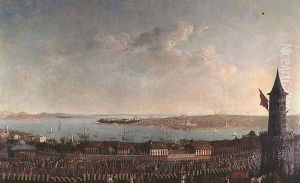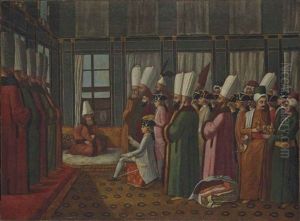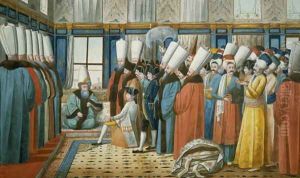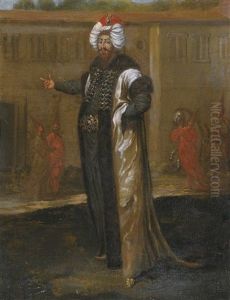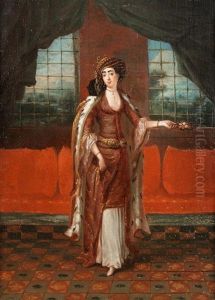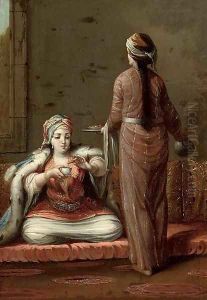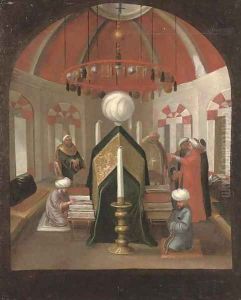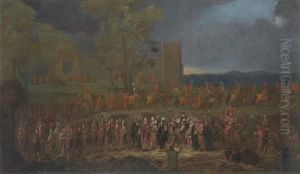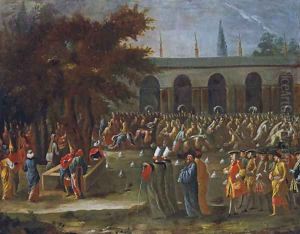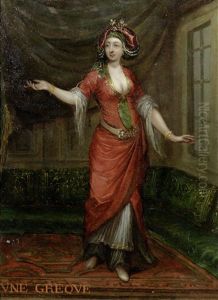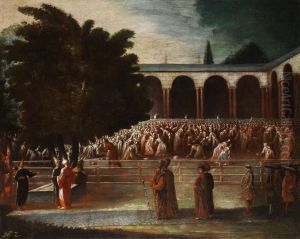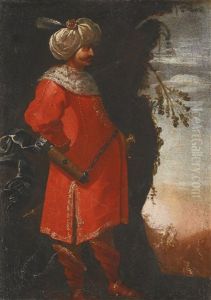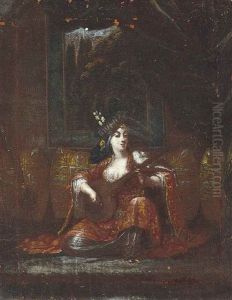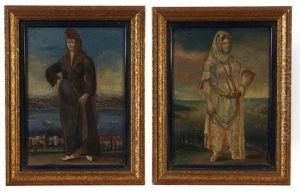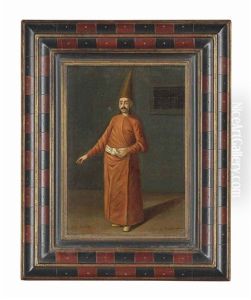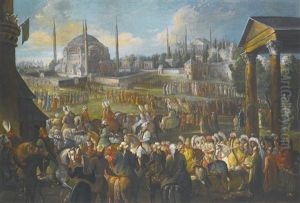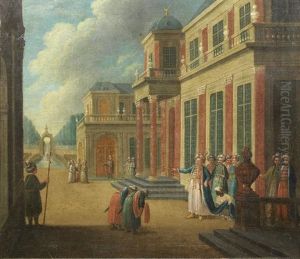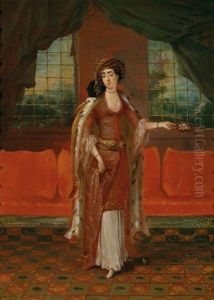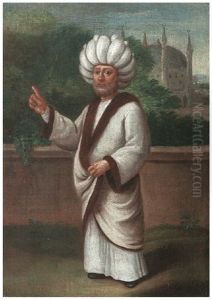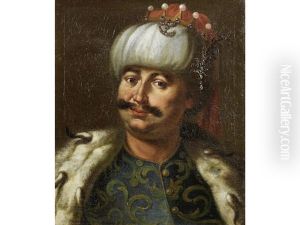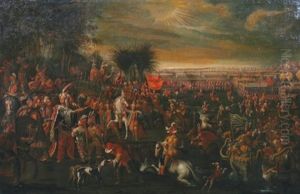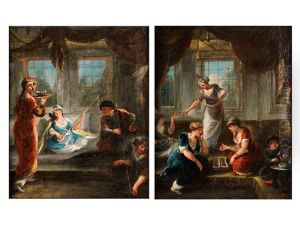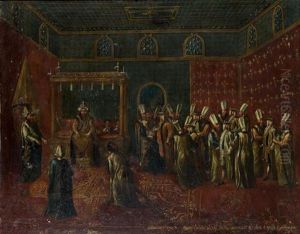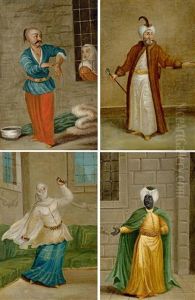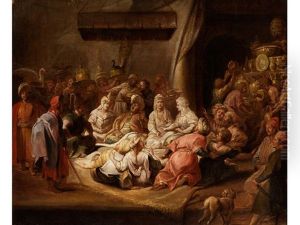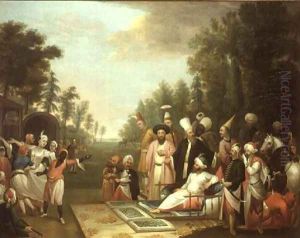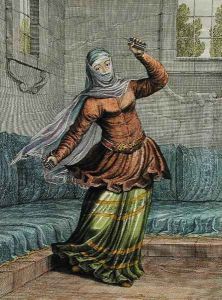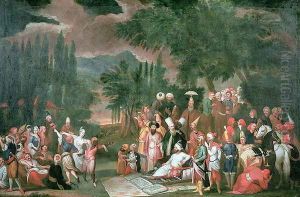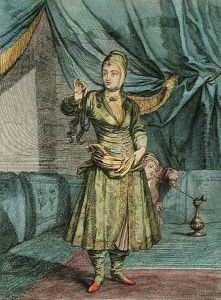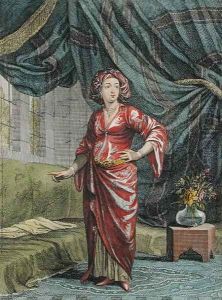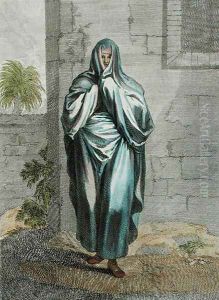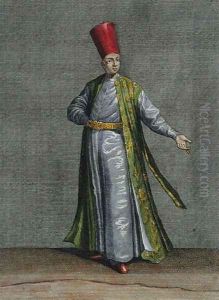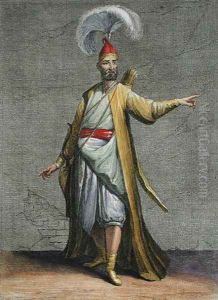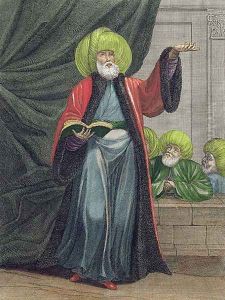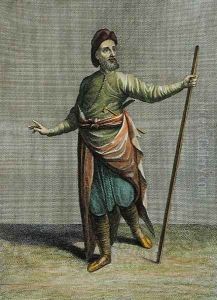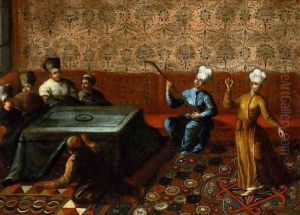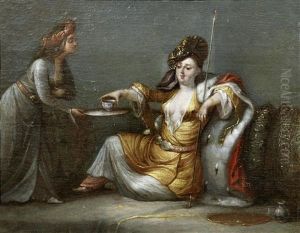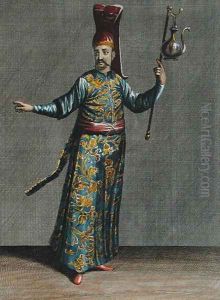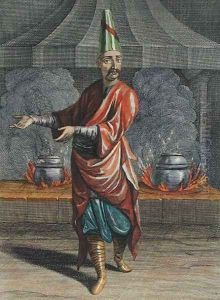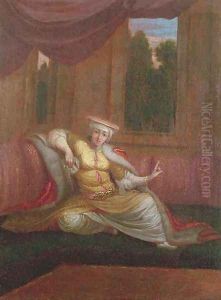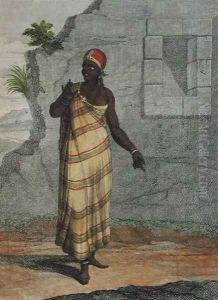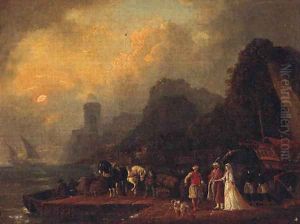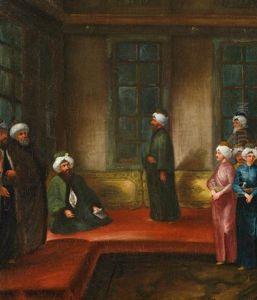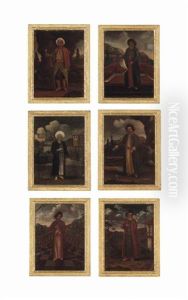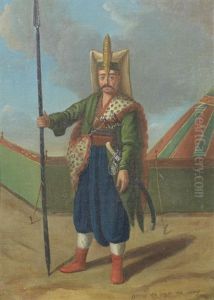Jean Baptiste Vanmour Paintings
Jean Baptiste Vanmour or Van Mour was a Flemish-French painter, best known for his vivid portrayal of life in the Ottoman Empire during the early 18th century. Born in Valenciennes in 1671, he showed an early interest in painting and was apprenticed to the painter Jacques-Albert Gérin in his hometown. His talent soon caught the attention of the French ambassador to the Ottoman Empire, the Marquis de Ferriol, who took Vanmour to Constantinople in 1699. There, Vanmour was commissioned to paint the ambassador's audience with Sultan Mustafa II, an event that marked the beginning of his prolific career as a chronicler of the Ottoman court.
Vanmour spent the rest of his life in Constantinople, capturing the costumes, ceremonies, and daily life of the city with great detail and realism. His works were especially notable for their ethnographic accuracy, and he created more than 100 portraits of individuals from various ethnic and social backgrounds living in the Ottoman Empire. These paintings were not only artistically significant but also served as important historical records of the era.
During his time in the Ottoman Empire, Vanmour's studio became a popular destination for European visitors, and his paintings were highly sought after by collectors and diplomats who wanted a piece of the exotic East to take back home. He also influenced a number of local artists, helping to introduce Western painting techniques into the region.
Vanmour's legacy includes a valuable visual archive of the Ottoman Empire's diverse society. His works are still admired for their detail and provide a window into the historical context of the time. After his death in 1737, his studio continued to produce works in his style, testament to the enduring appeal of his representation of Ottoman life.
